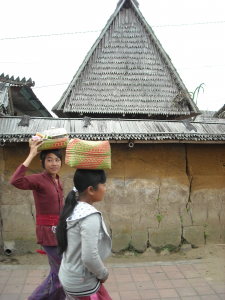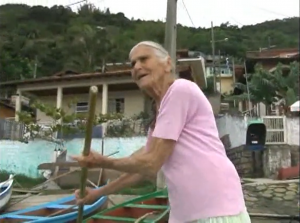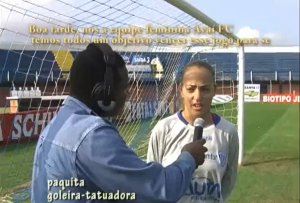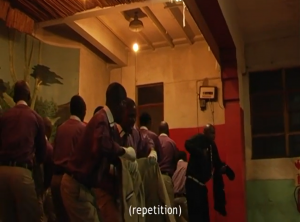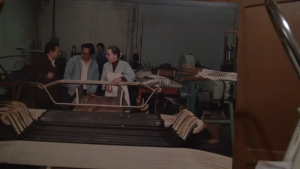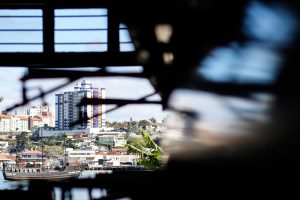DOCUMENTÁRIOS ETNOGRÁFICOS DO NAVI

|
Author: Carmen Rial; Miriam Grossi Following the footsteps of Margaret Mead, we visited the village of Desa Bayung Gede, where she and her husband Gregory Bateson conducted research and founded the field of Visual Anthropology with their films and photos. In a “lucky accident,” as Mead used to say, we encountered Iketut, who had been one of the children they filmed. He invited us to his home, showed us a copy of the book Balinese Character, a gift from Mead herself, and took us to a ceremony. Iketut said Desa Bayung Desa had changed. In our perception, and upon comparing it with Bateson’s photos, not much was different. The dances we saw there (in color) were exactly the same as those Bateson pictured (in black&white)
|
|
Author: Maycon Melo It is not through the slopes that the residents of Morro do Torquato in Barra da Lagoa arrive at their homes. For that, it is necessary to cross a canal, the river that cuts through the neighborhood and that connects Lagoa da Conceição to the sea. The bridge of these residents is the batera (a boat) that is divided into routes for men and women. In September 2009, Dona Maria, 79, organized a batera race. The batera race, which for years was held during the traditional Festa da Tainha, for the first time became an event with its own autonomy. Festajá does not happen due to political differences. The Batera Race came into existence. A ransom? The batera, untied from the daily reference language, gained static modulation that made the cultural and political aspects of this group emerged. The Corrida de Bateras brought together fishermen, traders and foreigners in the same event, produced an auto mise en scene aimed at civil and public power. |
| Let me go
Author: Maycon Melo This video discusses the trajectory of female soccer players in Florianópolis / SC. A context marked by amateurism and passion for sport finds, in the course of the 2008 Santa Catarina Women’s Football Championship, perspectives that connect their stories with the present time. Moment defined by the investment initiative of the club they play – Avaí FC – and a timid recognition of women’s football in Brazil after the Beijing Olympics. The marks of this trajectory illustrate an intense process of negotiation / competition in football. |
| Slow Walker
Author: AlexVailati Saturday night, four o’clock in the morning. In Durban downtown, is starting an isicathamiya competition, a genre of music and dance created during apartheid, by migrant workers that lived in townships, urban spaces where not-white were segregated. Today, in the age of freedom, isicathamiya is one of the most important expressive tool of black South Africans. Moreover, it is a mirror of problems and resources of South African society. This documentary is an encounter with performers’ life and a description of a performance that happens every Saturday night, since almost seventy years. |
| Work Lives: Jorge and Chiqui
Author:Matias Godio First chapter of a documentary series that addresses the notions of trajectory, myth and event present in the memory of workers in Argentina and Brazil. In this first chapter, starring Chiqui and Jorge, these issues are dealt with, diving into the stories of a significant event in their lives as industrial workers in Argentina. The documentary tries to be a reflection on the mythical structures present in the narratives of the interlocutors. It seeks to stage imaginary and dreamlike horizons of significance capable of creating analogies between the structures, ideologies and social facts that cross the lived world of work. |
| Imaginary Lines
Learning to row with them is the challenge. When moving the camera, the parallax of the image and the perspective in motion are revealed. Invariants and variants, maps, landmarks, landscape marks, all as orientation markers for calculating effort. The camera allows us to think of images of these imaginary lines from the visual experience. |






